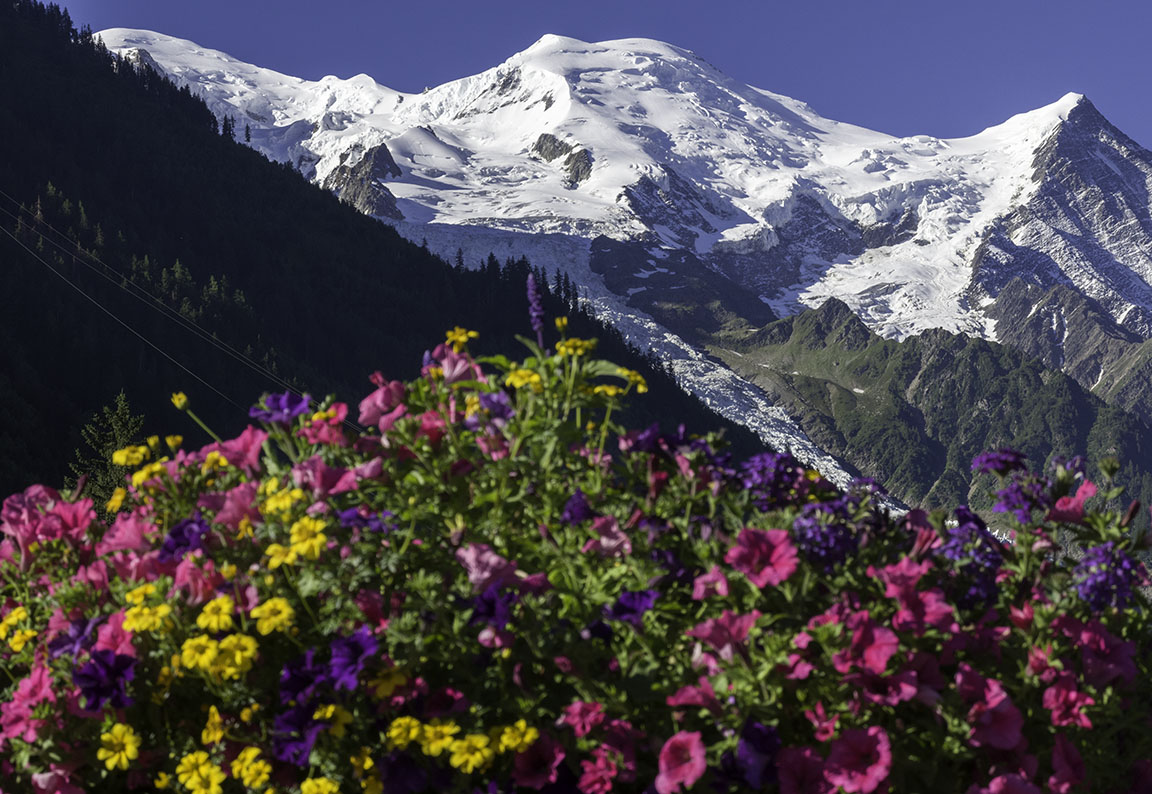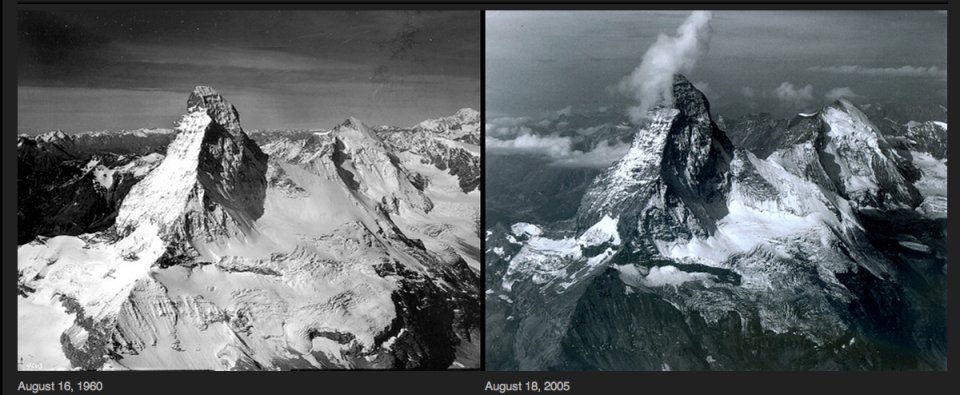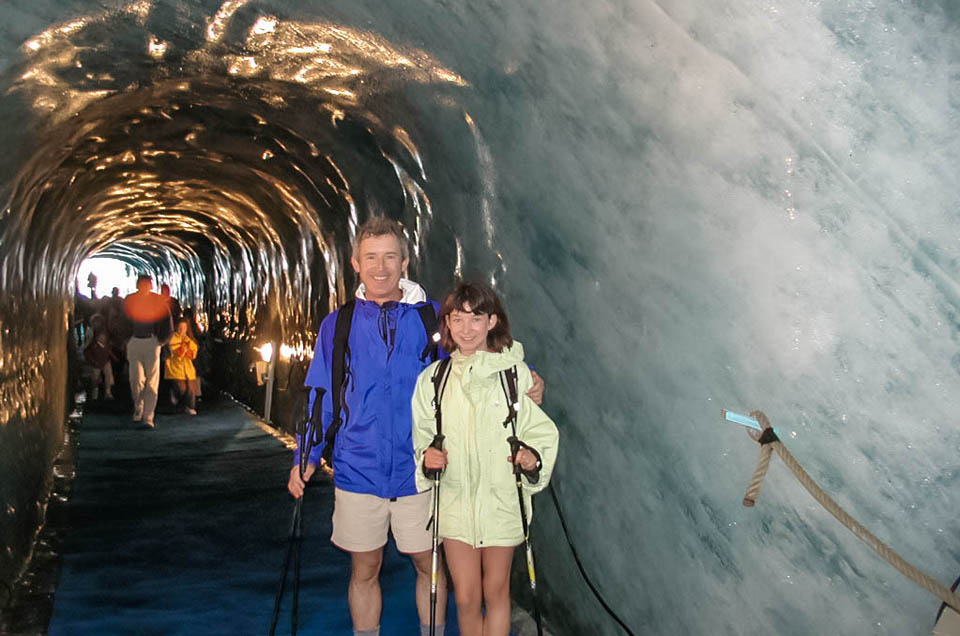Many of you are traveling to the Alps this summer, have visited in the past or are still dreaming up your travel plans for the future. This is the first article in a climate change series focused on the Alps. Our goal in this series is to engage and inform. Arming you, the alpine traveler with knowledge about the changing landscape that you are undoubtedly going to, or have already, fallen head over heels for.

No matter your knowledge or prior connection with climate change, it will be with you on your journey along the perfectly maintained trails of the Alps and their inspiring glacier vistas. It’s there as you look up the concave rock wall of the historic North Face of the Eiger – no longer climbable in the summer season due to melting permafrost destabilizing the rock face. It’s there when you stroll along the historic trail towards the continually retreating Morteratsch Glacier near Pontresina, which has retreated a stunning 2 km in the past 120 years.
As you continue reading please keep in mind that these articles are designed to inspire and engage as there are countless positive places to invest our energy and resources that both reduce our impact and help combat climate change. One of these hopeful actions is education and awareness and there is no better path to these outcomes than personally hiking through one of the fastest changing regions of the world, the Alps.

The melting glaciers:
The Alps are melting. In fact, they are melting faster than ever recorded in the history of the world. The temperatures in the Alps have increased 2 degrees Celsius in the past 120 years – almost 2 times that of the rest of the world. According to the European Environment Agency, increasing temperatures are changing much of the Alps by shortening the overall winter season, changing total snow fall accumulation and increasing overall glacier melt. The glaciers of the Alps have lost on average half of their total ice volume since 1850, with the significant portion of this loss occurring since the mid 1980’s.

Modern day people have lived in the valleys of the Alps for at least 30,000 years. Not surprisingly, people have adapted to living in the Alps, and the impacts of climate change is no different. In fact, Europeans today are already quickly adapting to changing systems and industries. For example, ski resorts of the Alps are already blanketing glaciers with various materials to slow their melt and extend their ski season and protect their industry. Similarly, energy is increasingly being drawn from renewable sources throughout Europe. In Switzerland , according to the Swiss Federal Office of Energy, hydroelectric power remains their largest source of electricity, and not surprisingly a huge percentage of this power is being drawn from the glacial melt and rivers of the Alps. Switzerland voters are soon expected to approve their Energy Strategy 2050 which aims to cut overall energy use and promote renewables despite higher up-front costs.
Transportation throughout the Alps has also seen a dramatic shift toward renewable energy. In 2014, the International Railway Association and Community of European Railway and Infrastructure Companies stated that the “European railways will reduce their total CO2 emissions from train operation by 30% by 2030 and strive toward carbon-free train operation by 2050 in order to provide society with a climate neutral transport alternative”.
A personal encounter:
You can no longer visit the Upper Glacier in Grindelwald, which reached the valley floor as recently as the 1990’s, but if you want to see Europe’s glaciers, there are a number of places to visit where you can see first hand the changes happening to glaciers in the Alps. Some of our favorites include the Morteratsch Glacier outside of Pontresina, the Mer de Glace near Chamonix, and the Gorner Glacier above Zermatt. Each of these stops allow visitors to experience the dramatic changes that these glaciers have undergone with visual stopping points to guide the experience.
In the case of the Mer de Glace, ice grottos are carved every year to allow visitors access into the depths of the glacier. Impressively, the previous years ice grottos are still visible and make a great display as to how quickly the glacier moves and changes from year to year. The Morteratsch glacier is now 2 km from the train station where it was once perched for the view of eager visitors, with signposts showing the glacier’s retreat in 10 year increments, a fascinating and educational walk. The Gorner Glacier above Zermatt is part of the 2nd largest glacial system in all of the Alps, second to the Aletsch Glacier. It’s accessible by foot from the train stop in Riffelberg and the trail leads you to an impressive glacier vista (3.9 miles) where you can view the confluence of multiple glaciers below Monte Rosa. A more technical trail leads mountaineers down ladders to the ice of the Gorner Glacier where they begin their hike back up towards the Monte Rosa Hut.

What can I do?
For us, as Alpinehikers travelers, the stunning glacier views are one of the pleasures of the Alps, and the quickly receding glaciers mean a dramatically shifting landscape that directly impacts its inhabitants, visitors and entire ecosystem. As you enjoy the singing cowbells of the Bernese Oberland, are circumnavigating the white cap of Mont Blanc or sipping espresso in the Italian Dolomites, don’t be afraid to contemplate its quickly changing beauty. Climate change is dramatically reshaping the Alps and this rapidly changing landscape has a story to tell that is thick in history and lessons. Enjoy your time in the magic of the Alps but when you return home, be sure to share its changing story with friends and family.






